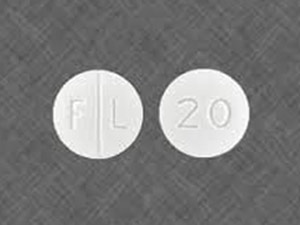Showing all 2 results
Lexapro is a popular antidepressant that helps to treat symptoms of depression, anxiety, and other mental health conditions. Lexapro is a type of drug known as a selective serotonin reuptake inhibitor (SSRI).
It is used to treat adults with major depressive disorder (MDD), generalized anxiety disorder (GAD), and other related mental health disorders. SSRIs work by altering levels of the natural chemical serotonin, which can help improve your mood, relax your mind and body, and reduce physical symptoms of depression or anxiety.
The prescription drug is typically prescribed to people who are having difficulty managing their mental health due to the severity of their condition.
Lexapro can help reduce symptoms such as low mood, lack of motivation, and poor concentration.
It also reduces the intensity and frequency of symptoms, like panic attacks and insomnia.
Before taking Lexapro, it’s important to understand how it works and what potential side effects you might experience.
In this article, we will discuss what Lexapro is, its typical dosing schedule, and the potential side effects you should be aware of before taking it.
Typical Dosing for Lexapro
Lexapro is usually prescribed in doses of 10mg once daily, with many physicians opting to increase the dose to 20mg once daily.
It is important that you take the exact dose that your doctor has prescribed.
As with any other medication, it may take up to 4 weeks before you feel the full benefit of Lexapro.
It is important that you do not increase or decrease your dosage without consulting your doctor first as this could cause serious side effects or decrease the effectiveness of Lexapro. If you miss a dose it is recommended that you take it as soon as possible and do not double up on your next dose.
If you experience any side effects while taking Lexapro, it is important to contact your healthcare provider immediately in order to ensure they are monitored and/or diminished appropriately.
It is also essential to notify them if there are any changes in your mood or behavior while taking Lexapro.
Common Side Effects of Lexapro
Lexapro is a powerful antidepressant medication and can come with some side effects. It is important to be aware of the common adverse reactions before beginning treatment so you can decide if it is right for you.
The most common side effects reported by patients taking Lexapro are:
– Insomnia
– Nausea
– Headaches
– Sexual dysfunction
– Increased sweating
– Decreased appetite
– Fatigue and drowsiness
Most of these side effects will go away after taking Lexapro for a few weeks, but if any become persistent or bothersome, it is important to speak with your doctor.
Your doctor may be able to adjust your dosage or provide advice on how to manage them.
Monitoring Your Symptoms While Taking Lexapro
When you begin taking Lexapro, it is important to monitor your symptoms closely. Your doctor will likely ask for regular follow-up visits and assessments in order to track your progress. It is also important to be mindful of any side effects that may arise from taking the medication – these can include nausea, headaches, fatigue, gastrointestinal issues, and sexual side effects, among others.
If you experience any side effects while taking Lexapro that are disruptive or concerning, or any other changes in mood or behavior, talk to your doctor right away. They may suggest switching to a different dosage or switching medications entirely.
It is also important to know that the full benefits of Lexapro do not become apparent until after several weeks of taking the medication. It may take up to eight weeks for the medication to reach its full therapeutic effect.
If you don’t notice an improvement by this time, speak with your doctor about adjusting your dosage or trying a different approach entirely.


